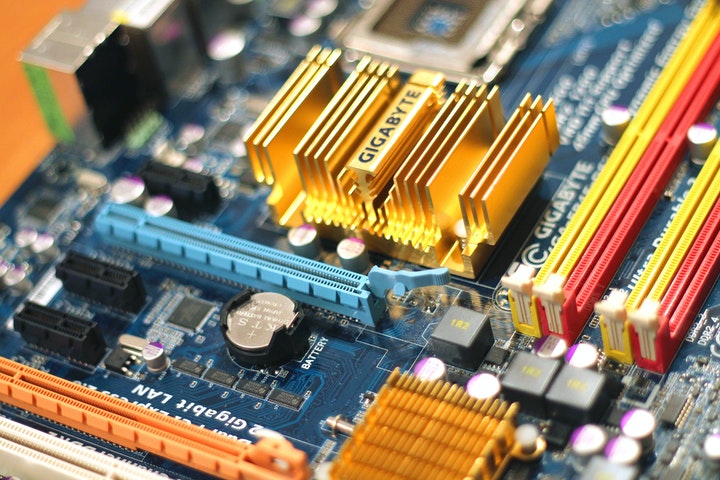A few minutes past noon on the 2nd of June 2020, India’s Union Minister for Electronics and Information Technology, Mr Ravi Shankar Prasad, flanked by ‘MEITY’ Secretary Mr Ajay Sawhney, Joint Secretary Mr Saurabh Gaur and others, addressed media in connection with the launch of “three schemes to help boost electronic manufacturing in India“. Full recording can be viewed below.
Mr Amitabh Kant CEO of NITI Ayog, the policy think tank of the Government of India, opined that a few years later when we look back, this will be seen as a historic announcement. With the government offering nearly 50,000 crore INR (around $6.7 billion) in sops, clearly quite a few lives are likely to change for good, the question is, whose lives.
My area of interest is the semiconductor chip (IC) manufacturing and two weeks ago, I had written in detail about it in my article “SPECS – Has Indian Govt Addressed ‘Initial Challenges’ For a Fab Investment?” I had then delved into the background and summary of one of the three schemes, namely SPECS.
The other two are PLI and EMC2 and I will touch upon them in this article, to the extent I feel relevant for a semiconductor fab which in turn are broadly categorized into two kinds.
The first category is the Pure-Play Foundry (let us use PPF for them) who do not make or market a product. Instead they make – in fact fabricate – chips that are needed for various parts. Many such parts – quite likely made by various companies – will go inside a final product like a mobile or laptop. The companies which make the parts and/or the final products may be “fabless” or could be an “Integrated Device Manufacturer” (IDM).
IDM is the second category of companies who own semiconductor fabs. Let me name a bunch of companies in random – Intel, TSMC, Samsung, GlobalFoundries, Micron, Towerjazz – it is an exercise to the reader to figure out if they are PPF or IDM. Don’t be surprised if you don’t see names of companies which you are familiar with from the semiconductor world because I have not listed all who have fabs, let alone the myriad of others which could be design houses, design automation (EDA) vendors, equipment makers and so on.
Some of the companies I listed will show up in recent news related to investments in new fabs, but I must also remind that not every fab has to be making advanced, complex chips in big volumes. I have not analysed the world of “small fabs” associated with making components or possibly some less complex electronics but many of what I write below are likely to be relevant for them as well. Also, who knows, some fabless ones may now think of starting a small one in India as a “second source” for their parts.
I shall however continue to look at the possibility of a $1bn – $2bn fab. At an exchange rate of 75 INR to 1 USD, that is 7500 – 15000 crore INR. The first scheme ‘Production Linked Incentive’ or PLI , incentivises production over and above what was achieved in base year 2019-2020.

So PLI perhaps has nothing much for a PPF because they don’t sell any products and moreover none of them exist already in India during the base year. Some IDMs may meet that criterion, but from what I have understood, this incentive can be availed even if they don’t have the fab in India. With the caveat that I am no expert at reading such legal documents and could have easily missed or misunderstood key points, the details (downloadable) are available at “Guidelines For Operation Of Production Linked Incentive Scheme (PLI) For Large Scale Electronics Manufacturing.”
Downloadable details of SPECS are now available at “SPECS Guidelines – 31 May 2020”
The devil however, if any, is usually in the details. I will refer to section numbers of some points which I feel are key.
The eye-catching line is in 2.11 “Incentive is 25% of eligible capital expenditure for an approved application under the Scheme“.
Applications under the scheme can be made until 31 March 2023 (section 1.1).
The capital expenditure must be made after and within 5 years of the date of acknowledgement of the application (section 4.1.1).
List of goods that must be produced and the minimum investment limits for them are mentioned in annexure-1, from small components all the way up to ICs.
Section 2.9 deals with what qualifies as Capital expenditure – the same concern I expressed in my previous article about only 20% of refurbished equipment being covered, remains after reading section 2.9.4. I really hope that the government is open to discussion on some exemption there, at least for some categories of investments, or if the Project Management Agency (PMA) has the expertise, some categories of equipment which are extremely costly.
It is good to see that technology transfer is covered as per 2.9.3 .
Finally, 2.9.5 states that land and building are not covered and that takes us to “EMC2.0”
The details (downloadable) of the third scheme – Modified Electronics Manufacturing Clusters (EMC 2.0) – are available at Modified EMC 2.0 Scheme. The english version starts on page 8.
Once again, the eye-catching ‘financial assistance‘ comes in section 3.1 – “50% of the project cost subject to a ceiling of Rs. 70 crore for every 100 acres of land“.
As you read through the document there are multiple references to “state government” in matters of help with land and infrastructure. If one were to say that out of the 3 components that need to come together – government, investor(s), executing company – the first itself has two sub-components, namely Union government and State governments. The former has decided to take the initiative, and hopes that the latter, as well as the second and third components (or an entity satisfying both at the same time) will come through.
Also Read: Time For a New Normal For Developing a New India
Let me also take a look at the numbers in brief. With over 40,000 crore outlay for PLI, clearly the government is prioritising “take what has already succeeded, to the next level” over aspects of the supply chain which are either unborn or are at baby stage.
SPECS has an outlay of 3285 crore, and given that Assembly, Testing, Packaging units of companies that already have a base in India may “rush for the pie“, and that I have not so far seen an upper limit in terms of numbers to the amount of investment eligible for reimbursement, it is not clear if there is “enough for everyone“.
What happens if indeed there is a rush of multiple companies, each one trying to get above 1000 crore in reimbursement. Remember, to set up a full fledged, let us say 300 mm wafer fab of even a “few years old” technology node of say 45 nm or 65 nm or even 90 nm, that is a very realistic number – if anything, an underestimation.
One gets the feeling that the government is in a mood of “Let us see who goes for it“, at least when it comes to the high investment categories – which in itself is not bad, as long as there is a mechanism and people at its end to market it in the right ways to the right people or companies and an openness to negotiation on certain aspects if the interested parties do point out any discouraging clauses.
Overall, my initial reading and understanding gives a “one-and-a-half out of the three” score – I really wish there be more debate, even if it meant being corrected in my views or comprehension.
India’s Prime Minister Narendra Modi, in his last 6 years in office, has been at the forefront of making “ease of doing business” better in India, and pushing for other reforms including reducing industrial taxation, but a commercial fab-in-India remained a far cry.
Modi is known for his wanting to see India achieve hitherto unachieved things and his current tenure ends in May 2024 – some of the deadlines related to the scheme may be reflective of that.
For those like me who have lived through two decades of disappointment over almost nothing happening on the fab-in-India dream, these schemes offer a ray of hope and I am sure there are many more Indians in the semiconductor field who think the same and want to see it happen.



















